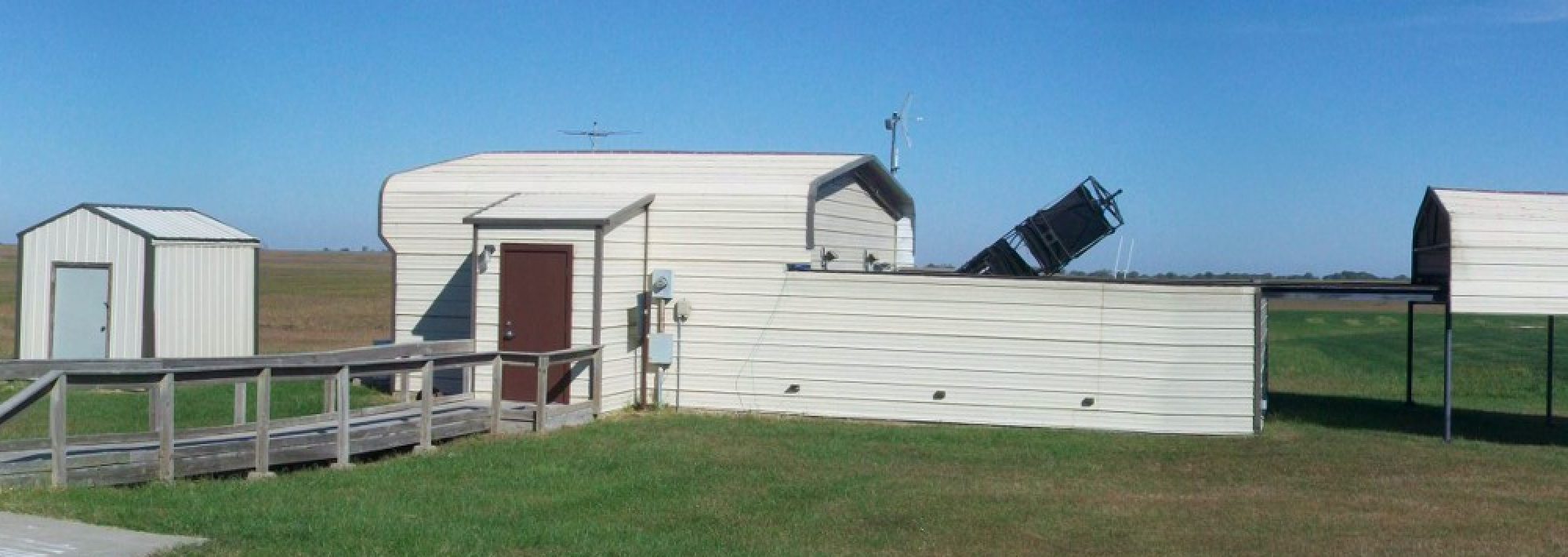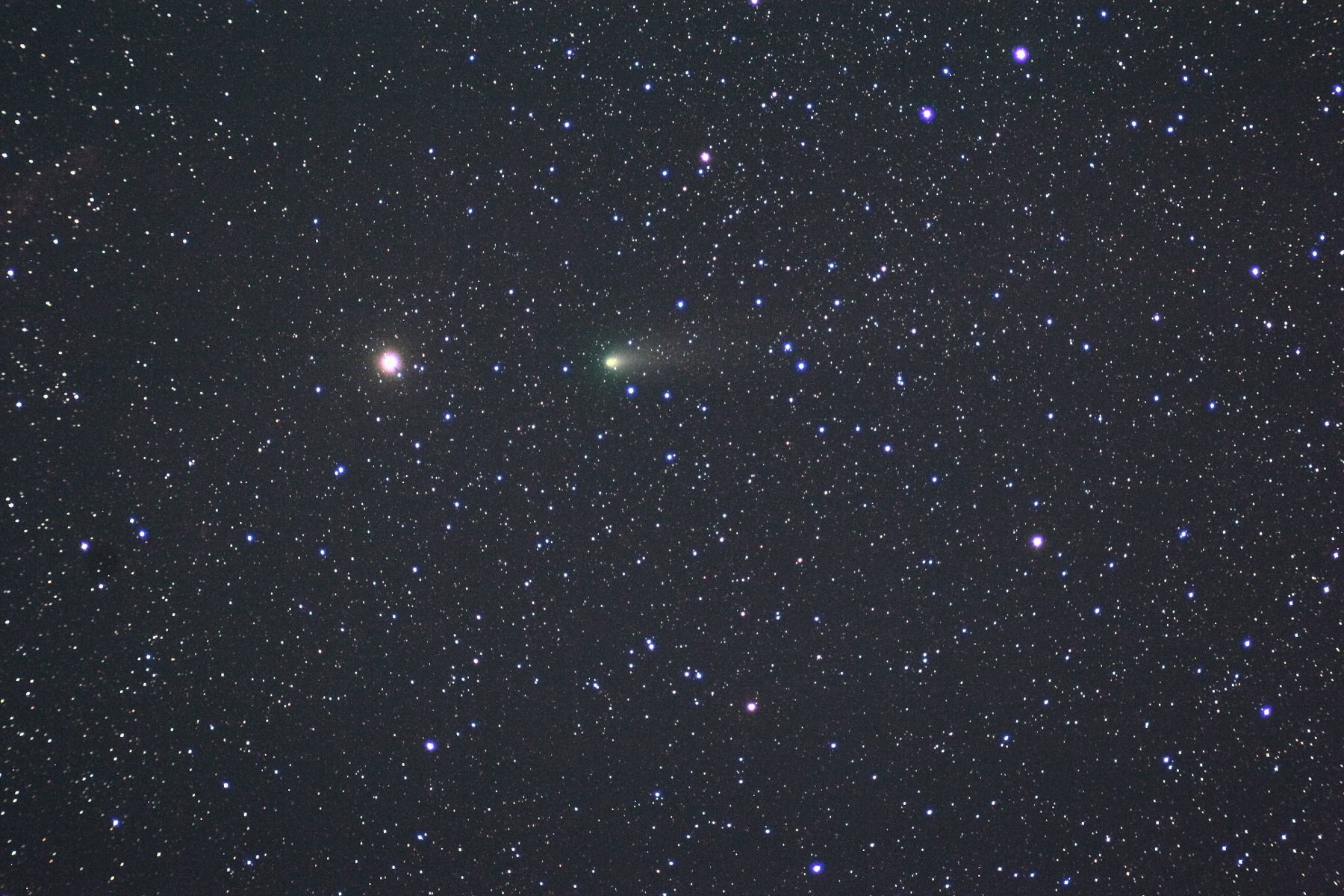Looking for something else fun to do? Check out NASA’s online activities, e-books and podcasts. Spot the International Space Station in your sky and apply to be an astronaut.
Interstellar Comet?
There is a comet-looking object on the NEOCP that is likely the next interstellar to enter our solar system. The object is temporarily designated as gb00234. It was discovered by L51 Margo observatory a couple of nights ago. Here is a rather
poor image taken just as dawn was breaking on 09-11-19.
The image is a composite of 3 – 1 minute images taken with an ST10 XME camera mounted on the 0.57meter Little Blue Reflector. It will be interesting to see what media does with this.
Gary Hug
M87’s black hole
Here’s M87 taken with my 22″ Reflector and an ST-8 CCD camera. The image show the jet of material traveling at some percentage of the speed of light while being squeezed out before reaching the event horizon . This does correlate with the black hole at M87 center that was recently ‘imaged’ and publicized. The ST-8 image taken at Sandlot Observatory was imaged on 04-02-19.
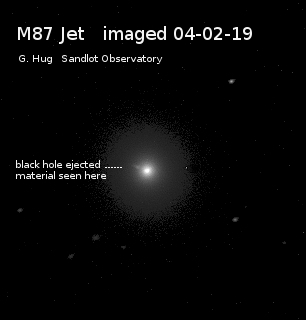
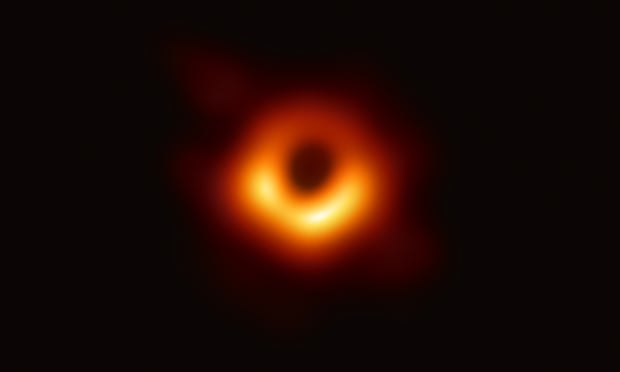
This image by the Event Horizon Telescope project shows the event horizon of the supermassive black hole at the heart of the M87 galaxy. Credit: EHT Collaboration
Asteroid 6478 Gault sprouted a tail.
A long known asteroid suddenly sprouted a long narrow tail. This is a 22 minute (45 secs x 30) cropped imaged taken with the Tombaugh Reflector at Farpoint 01-10-19 about 8:00 U.T. The tail was visible faintly in each of the 45 second images. This asteroid may have developed the tail through an impact with another rock. [T08] ATLAS Mauna Loa images 1-5.5 U.T. showed a comet like tail extending from the asteroid and comments started flowing on mpml and comet ml list servers. A couple of months ago it went through a 2 magnitude outburst and is still at that level as of last night. 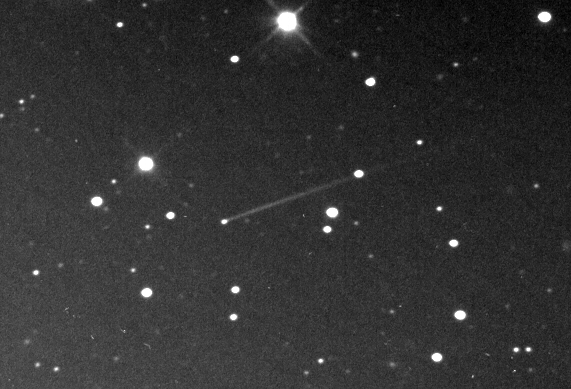
NEO Follow-up Targets
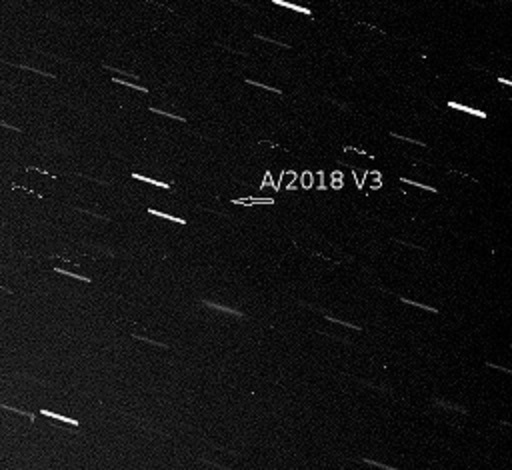 I originally thought A/2018 V3 was an asteroid (although it may end up being a comet) with a very long perihelion distance. But I was wrong; its max distance is just 4 A.U.’s but the eccentricity is .989( 99 times longer than wide orbit) and its inclination to the solar system is 165 degrees (almost perpendicular.)
I originally thought A/2018 V3 was an asteroid (although it may end up being a comet) with a very long perihelion distance. But I was wrong; its max distance is just 4 A.U.’s but the eccentricity is .989( 99 times longer than wide orbit) and its inclination to the solar system is 165 degrees (almost perpendicular.)
Anyway some of the objects in our NEO follow-up program are as faint or even a bit dimmer than 21.5 V magnitude. Even with the arrow pointing to the object its hard to see. Only with consistent movement in the predicted angle is it identifiable as a target. This image is a combination of 14 – 2minute images taken on the night of 11-14-18 and severely cropped. At the time the MPC listed it as 21.6 V magnitude. It would also be easier to see inverted (dark stars on white background) .
Gary
Comet 21P Giacobini-Zinner returns
This 5 minute image of the returning comet 21P (Giacobini-Zinner) was taken Sept 16, 2018 using a Cannon EOS coupled to an Apogee 80mm F6.25 refractor. The mount was a SST EQ-25 HPFD . At the time of this image, the comet was in the middle of the constellation Auriga.
Peter Birtwhistle
During a recent visit to England I had an opportunity to visit with Peter Birtwhistle at his home at Great Shefford. Peter is one of the most prolific observers for NEO follow-up in the world. Here we are in front of his backyard observatory (MPC J95) which houses a 16″ LX200 SCT in the small town of Great Shefford. He has developed his own software that allows manipulating image files to produce accurate results of NEO targets.
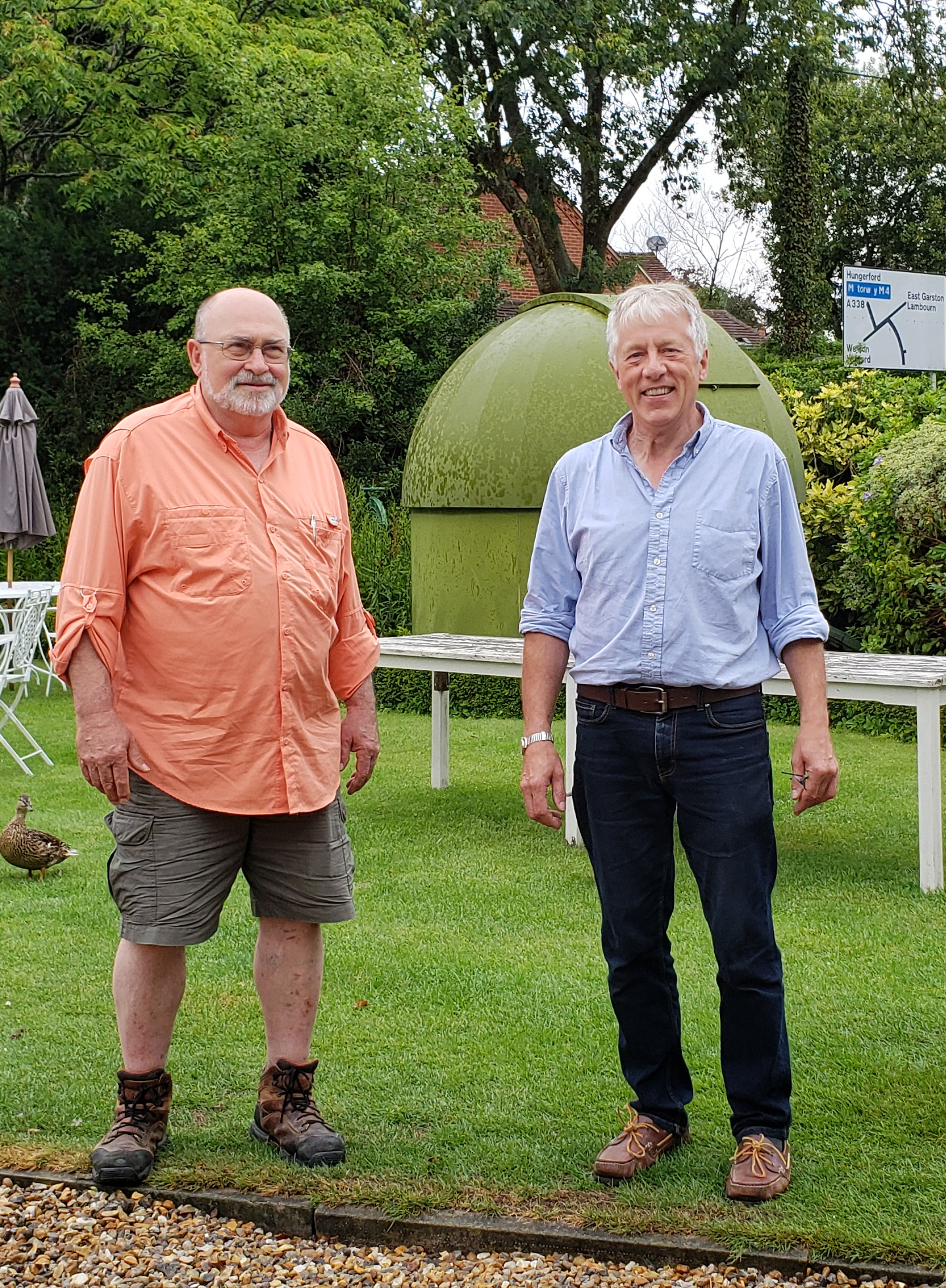
NGC 7331
 This is an image taken just before dawn 07-11-18 with the new (to us) STL 6303E camera mounted on the Tombaugh .7 meter Reflector at 2 bin pixels ( 18 micron).
This is an image taken just before dawn 07-11-18 with the new (to us) STL 6303E camera mounted on the Tombaugh .7 meter Reflector at 2 bin pixels ( 18 micron).
Gary
Ian Morison and Astrophotography
I came into contact with Ian Morison when he asked about the StarSync tracker to be reviewed in his book The Art of Astrophotography. This week he has let me know that he had been posting articles on his Astronomy Digest (Website) at www.ianmorison.com.
It has a lot of great info about astrophotography. For example I particularly liked his 3 part article on “Everything about Refractors” (Part 1, Part 2, Part 3). It goes into good detail about what is good about refractors. What are Doublets, Triplets and what different glass mean in terms of seeing, focus, and chromatic aberration.
Something that is also of value. He gave a lecture at Gresham College about his book which is very informative and can be viewed online. It starts with him using just a plain tripod and camera to capture star trails to using astronomy CCD Cameras. I recommend watching it.
NEKAAL Observer Facebook and Twitter Integration
I’m making this post to test and announce automated Twitter and facebook announcements when a new NEKAAL Observer post is made. So if you follow NEKAAL on Facebook or twitter you should get notified of new posts.
Also if you would like to post a article to the NEKAAL Observer just let me know. Contact russell.valentine@nekaal.org
